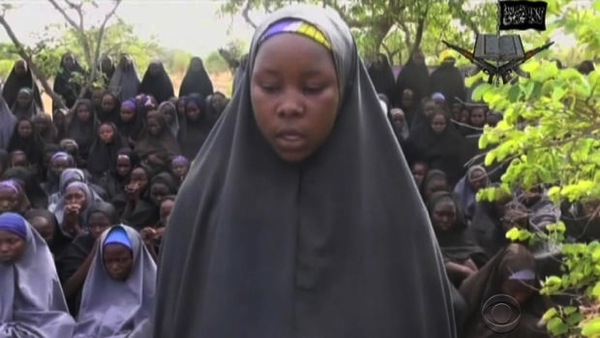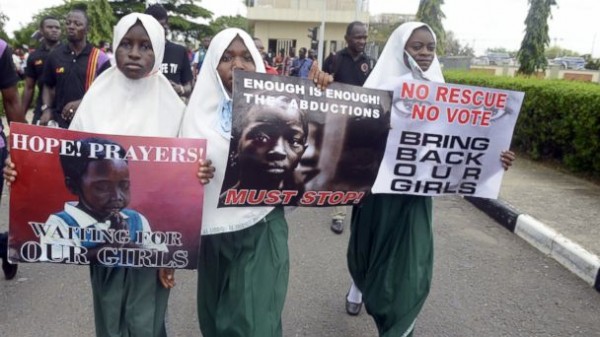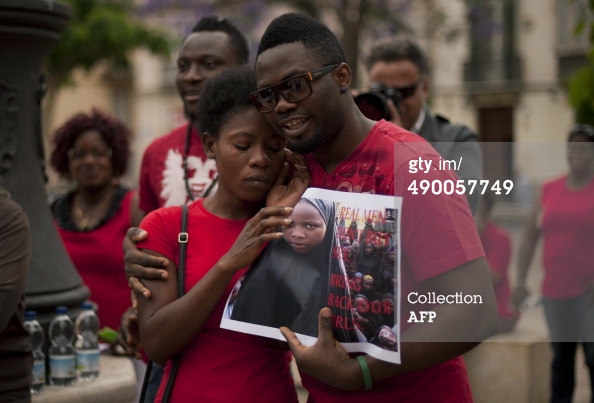Notes
Bring Back Our Girls … From the Digital Divide

It’s interesting that the net neutrality debate is heating up simultaneously with the heat being generated by the #bringbackourgirls hashtag and the plight of 276 kidnapped Nigerian girls.
As a western white man who commutes up and down that highway everyday, I’m mindful of how the media and institutional and political e-powers-that-be increasingly generate, promote and vacuum up the links, the referrals, the buzz, the search engine rankings, the credit backs and the ad opportunities to push “the less resourced” into the defacto slower lanes. I am mindful of the increasing difficulty and the randomness involved in gaining visibility on this highway, this supposed citizen’s commons, this so-called digital public square. I am mindful too of the pitfalls that await the small and unknowing persons or groups that suddenly find themselves, perhaps hitched to someone else’s vehicle, suddenly bobbing and weaving on foot through four lanes of traffic.
This story raises a myriad of issues. But an essential one, in this day and age, is that once the hashtag took off, we had no pictures. Of course, some were quickly “borrowed,” which ended up producing a whole raft of e-man’s problems — involving appropriation, virtual identity theft, and the racial problem of that folks in the West wouldn’t know a girl from Guinea-Bissau from a girl from Mbalala.
As a result, we’re not thinking about people with no pictures and no visual assets and a lack of activist resources like we do, and media savvy like we have. Instead, what we do see is people protesting almost like we do — but with Western visual contraband. And that brings up other comparisons (not highways, perhaps, but shipping lanes. And might there be Nigerian pirates? Maybe Tom Hanks can sort that out for us.)
What is truly remarkable about this story is how, even 27 days after their kidnapping, not one image ever surfaced of one of those 276 kidnapped Chibook girls — not one school photo, not one image from an official document, not even one snapshot taken by an aid worker or someone from an NGO. In a western universe where we’re more concerned about Facebook’s plans for our photo albums, or the choice between Instagram and Snapchat, or the agony over all the cameras and devices stealing their own pictures of us, how is it possible these girls could be invisible? When the Arab Spring was catalyzed by the cell phone, the images spilling all over the highway, how is it possible there exists people who don’t e-xist?
Of course, the e-world couldn’t get by without some visuals to go with its hashtag and the viral, Twitterati-driven story of those who could not be seen. That’s where the wire photo, many from Nigeria, became the catalyst for people breaching the divide. In an instant, those one degree separated from those invisible became those caught red-handed with posters of visual stand-ins, seduced, no doubt, by the the kind of slick, printed protest posters you see in the West.
Truly bizarre though, especially if it hastens their demise, is that the invisibility was breached, and the first photos of the girls — the one leading this post from the Boko Haram video — were supplied by the kidnappers themselves. (Notice, too, how the posters have gotten a refresh.)
Sadly, now that we we have some pictures and a poster girl, and we’ve given the Nigerians a lesson in intellectual property, we risk missing the point altogether. Because now that we’ve seen the girls and we know what they look like, the issue of visibility or invisibility is off the table. Now (liberating Anderson Cooper from the search for Flight 370), it’s become a search-and-rescue story with a human rights twist. Paradoxically, what those 27 days illustrate — if we look beneath the overpass — is that our best chance to have seen these girls was when they were still invisible. What they represented was a blind spot — active evidence that the web isn’t, in fact, omniscient, and our digital experience — as much as it feels like the essence of inclusivity — is overwhelmingly exclusive and exclusionary. Clearly invisibility is determined largely by the wider ramifications of race, class, gender and nationality. What’s so easy to miss, however — the activism and the debate surrounding the activism consuming the highway — is how much the invisibility was and remains a profound e-issue, these elements at the core of the ongoing and ever-widening digital divide.
(photo 1: screenshot: Boko Haram video via CBS. photo 2: Pius Utomi Ekpei/AFP/Getty Images. photo 3: Jorge Guerrero/AFP. caption: Activists hold a banner reading ‘Real Men Don’t Buy Sex, Bring Back Our Girls’ to denounce the kidnapping of more than 200 Nigerian schoolgirls by Islamic militants on May 13 , 2014 in Malaga. On April 14, 2014, 276 schoolgirls were abducted in the northeastern Nigerian town of Chibook, with eight more seized from Warabe on May 5. The IsTripitlamist militant group Boko Haram claimed responsibility, and threatened to ‘sell’ the girls into slavery.)




Reactions
Comments Powered by Disqus